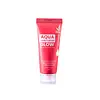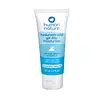What's inside
What's inside
 Key Ingredients
Key Ingredients

 Benefits
Benefits

 Concerns
Concerns

 Ingredients Side-by-side
Ingredients Side-by-side

Rubus Fruticosus Fruit Extract
AstringentRubus Idaeus Fruit Extract
AstringentFragaria Chiloensis Fruit Extract
Skin ConditioningVaccinium Angustifolium Fruit Extract
Skin ProtectingVaccinium Macrocarpon Fruit Extract
AstringentRibes Nigrum Fruit Extract
AstringentEuterpe Oleracea Fruit Extract
Morus Nigra Fruit Extract
Skin ConditioningVaccinium Myrtillus Fruit Extract
Skin ConditioningLycium Chinense Fruit Extract
AntioxidantCyclopentasiloxane
EmollientGlycerin
HumectantPEG-10 Dimethicone/Vinyl Dimethicone Crosspolymer
StabilisingCyclohexasiloxane
EmollientNiacinamide
SmoothingMagnesium Sulfate
Sodium Hyaluronate
HumectantAnanas Sativus Fruit Water
Skin ConditioningAnanas Sativus Fruit Extract
Skin ConditioningAnanas Sativus Fruit Juice
Skin ConditioningAscorbyl Tetraisopalmitate
AntioxidantAllantoin
Skin ConditioningEthylhexyl Methoxycinnamate
UV AbsorberButylene Glycol
HumectantPanthenol
Skin ConditioningTocopheryl Acetate
AntioxidantDimethiconol
EmollientPhenoxyethanol
PreservativeChlorphenesin
AntimicrobialCI 16035
Cosmetic ColorantParfum
MaskingRubus Fruticosus Fruit Extract, Rubus Idaeus Fruit Extract, Fragaria Chiloensis Fruit Extract, Vaccinium Angustifolium Fruit Extract, Vaccinium Macrocarpon Fruit Extract, Ribes Nigrum Fruit Extract, Euterpe Oleracea Fruit Extract, Morus Nigra Fruit Extract, Vaccinium Myrtillus Fruit Extract, Lycium Chinense Fruit Extract, Cyclopentasiloxane, Glycerin, PEG-10 Dimethicone/Vinyl Dimethicone Crosspolymer, Cyclohexasiloxane, Niacinamide, Magnesium Sulfate, Sodium Hyaluronate, Ananas Sativus Fruit Water, Ananas Sativus Fruit Extract, Ananas Sativus Fruit Juice, Ascorbyl Tetraisopalmitate, Allantoin, Ethylhexyl Methoxycinnamate, Butylene Glycol, Panthenol, Tocopheryl Acetate, Dimethiconol, Phenoxyethanol, Chlorphenesin, CI 16035, Parfum
Water
Skin ConditioningPropanediol
SolventBetaine
HumectantGlycerin
HumectantStearyl Alcohol
EmollientAloe Barbadensis Leaf Juice
Skin ConditioningGlycine Soja Oil
EmollientDicaprylyl Ether
EmollientHydrolyzed Hyaluronic Acid
HumectantBeta Vulgaris Root Extract
Skin ConditioningHydrolyzed Corn Starch
HumectantTapioca Starch
Xanthan Gum
EmulsifyingSclerotium Gum
Emulsion StabilisingCapryloyl Glycerin/Sebacic Acid Copolymer
Skin ConditioningDiheptyl Succinate
EmollientTocopherol
AntioxidantGlyceryl Caprylate
EmollientCetearyl Alcohol
EmollientCetyl Alcohol
EmollientMyristyl Alcohol
EmollientArachidyl Alcohol
EmollientGlyceryl Stearate Citrate
EmollientCitric Acid
BufferingSodium Citrate
BufferingGluconolactone
Skin ConditioningCalcium Gluconate
HumectantParfum
MaskingSodium Benzoate
MaskingPotassium Sorbate
PreservativeWater, Propanediol, Betaine, Glycerin, Stearyl Alcohol, Aloe Barbadensis Leaf Juice, Glycine Soja Oil, Dicaprylyl Ether, Hydrolyzed Hyaluronic Acid, Beta Vulgaris Root Extract, Hydrolyzed Corn Starch, Tapioca Starch, Xanthan Gum, Sclerotium Gum, Capryloyl Glycerin/Sebacic Acid Copolymer, Diheptyl Succinate, Tocopherol, Glyceryl Caprylate, Cetearyl Alcohol, Cetyl Alcohol, Myristyl Alcohol, Arachidyl Alcohol, Glyceryl Stearate Citrate, Citric Acid, Sodium Citrate, Gluconolactone, Calcium Gluconate, Parfum, Sodium Benzoate, Potassium Sorbate
 Reviews
Reviews

Ingredients Explained
These ingredients are found in both products.
Ingredients higher up in an ingredient list are typically present in a larger amount.
Glycerin is already naturally found in your skin. It helps moisturize and protect your skin.
A study from 2016 found glycerin to be more effective as a humectant than AHAs and hyaluronic acid.
As a humectant, it helps the skin stay hydrated by pulling moisture to your skin. The low molecular weight of glycerin allows it to pull moisture into the deeper layers of your skin.
Hydrated skin improves your skin barrier; Your skin barrier helps protect against irritants and bacteria.
Glycerin has also been found to have antimicrobial and antiviral properties. Due to these properties, glycerin is often used in wound and burn treatments.
In cosmetics, glycerin is usually derived from plants such as soybean or palm. However, it can also be sourced from animals, such as tallow or animal fat.
This ingredient is organic, colorless, odorless, and non-toxic.
Glycerin is the name for this ingredient in American English. British English uses Glycerol/Glycerine.
Learn more about GlycerinParfum is a catch-all term for an ingredient or more that is used to give a scent to products.
Also called "fragrance", this ingredient can be a blend of hundreds of chemicals or plant oils. This means every product with "fragrance" or "parfum" in the ingredients list is a different mixture.
For instance, Habanolide is a proprietary trade name for a specific aroma chemical. When used as a fragrance ingredient in cosmetics, most aroma chemicals fall under the broad labeling category of “FRAGRANCE” or “PARFUM” according to EU and US regulations.
The term 'parfum' or 'fragrance' is not regulated in many countries. In many cases, it is up to the brand to define this term.
For instance, many brands choose to label themselves as "fragrance-free" because they are not using synthetic fragrances. However, their products may still contain ingredients such as essential oils that are considered a fragrance by INCI standards.
One example is Calendula flower extract. Calendula is an essential oil that still imparts a scent or 'fragrance'.
Depending on the blend, the ingredients in the mixture can cause allergies and sensitivities on the skin. Some ingredients that are known EU allergens include linalool and citronellol.
Parfum can also be used to mask or cover an unpleasant scent.
The bottom line is: not all fragrances/parfum/ingredients are created equally. If you are worried about fragrances, we recommend taking a closer look at an ingredient. And of course, we always recommend speaking with a professional.
Learn more about Parfum